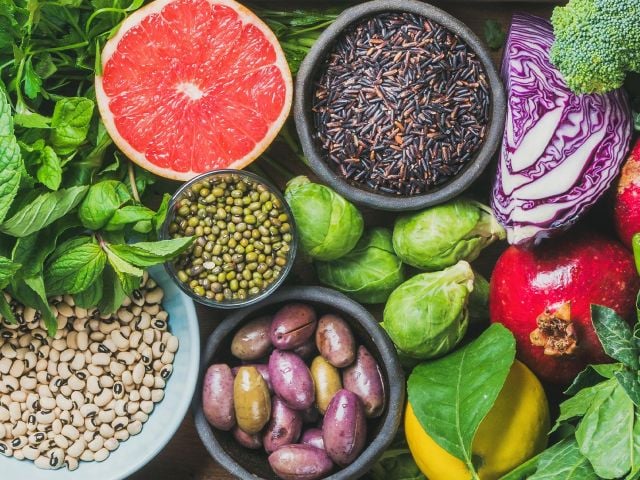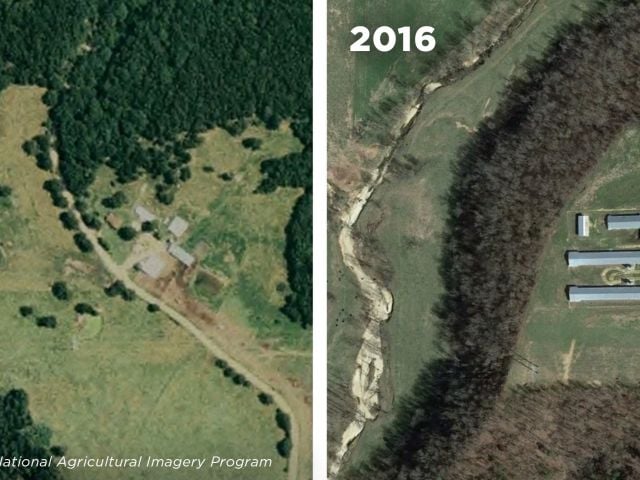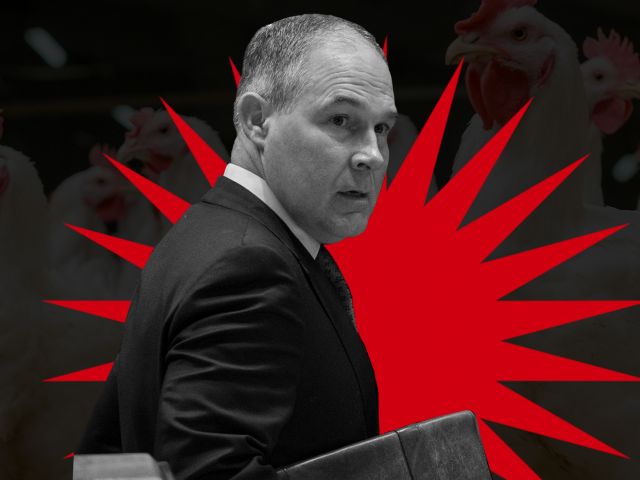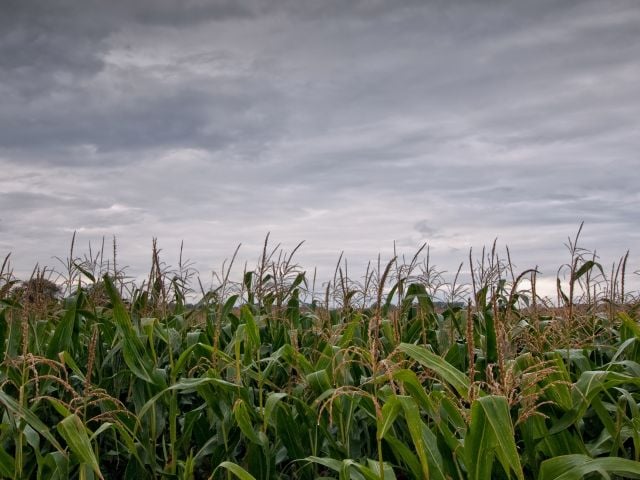Displaying 6001 - 6024 of 7456
Research
Exposing the Cosmetics Cover-up
At EWG, we know how much you care about the safety of personal care products. Over the next several weeks we will delve deeper into some of the crucial issues surrounding these products. EWG's investigative series, "Exposing the Cosmetics Cover-Up," will take on a wide range of topics that should be on the minds of everyone who uses a personal care product. As EWG has long known — and as leading

Research
Pumped Up
Supporters of the House and Senate versions of the stalled farm bill are arguing that they represent historic reform because both would replace Direct Payments with a suite of new subsidies designed to cover “losses” too small to be compensated even by the over-generous crop insurance program.

Research
BB and CC Creams
“Skin Perfector.” “Balance, brighten, renew and protect.” “Anti-aging.” The ads sound too good to be true. BB (stands for beauty balm) and CC (stands for color corrector or complexion corrector) creams claim to be all-in-one moisturizer, concealer, foundation and sometimes sunscreen.

Consumer Guides
Five Reasons to Skip Bottled Water
Over the course of a week, EWG highlights five important reasons to skip bottled water and opt for filtered tap water instead.

Research
Report: Up to 110 Million Americans Could Have PFAS-Contaminated Drinking Water
More than 1,500 drinking water systems across the country may be contaminated with the nonstick chemicals PFOA and PFOS, and similar fluorine-based chemicals, a new EWG analysis shows.

Research
Case Study: Corn Belt Communities Plagued by Nitrate in Tap Water
In December 2015, the 1,500 residents of Erie, Ill., received a warning that the community's tap water should not be given to babies under 6 months old, or used to mix formula or juice for those infants.

Research
Update: Mapping the Expanding PFAS Crisis
The latest update of an interactive map by EWG and the Social Science Environmental Health Research Institute at Northeastern University documents publicly known PFAS pollution from 94 sites in 22 states, including industrial plants and dumps, military air bases, civilian airports and fire training sites. It also shows PFAS pollution of tap water for 16 million people in 33 states and Puerto Rico.

Research
Double Dipping: How Taxpayers Subsidize Farmers Twice for Crop Losses
After a decline in crop prices in 2014 and 2015, the U.S. Department of Agriculture boosted farmers' income by more than $13 billion through two newly enacted subsidy programs. But during the same period, another USDA program paid out nearly as much to “compensate” the same farmers for the same decline in prices. In all, this double-dipping cost American taxpayers almost $23.9 billion.

Research
Organic Within Reach
With a little planning, cooking organic food can save money and time, help you eat better, cut down on waste and help protect the environment.

Research
Growing Organic
In less than two decades, sales in the organic sector have grown from $3.7 billion in 1997 to more than $43 billion in 2015.

Research
Mapping Cover Crops on Corn and Soybeans in Illinois, Indiana and Iowa, 2015-2016
Mapping Cover Crops on Corn and Soybeans in Illinois, Indiana and Iowa, 2015-2016

Research
EWG Investigates: Pruitt’s Toothless Poultry Law
Scott Pruitt, President Trump's nominee to lead the Environmental Protection Agency, has a penchant for making misleading claims about his record on the environment.

Research
EWG Investigates: Scott Pruitt and Poultry Pollution
As Oklahoma's attorney general, Scott Pruitt rolled back efforts to protect the waters of his home state from the poultry industry and other polluters.

Research
Exposing Fields of Filth in North Carolina
North Carolina boasts the nation's second biggest hog farming industry, worth $3 billion in hog and pig sales in 2012 alone, according to the U.S. Department of Agriculture. It ranks third among the states for poultry production.

Research
Mercury in Seafood
In 2014, federal agencies issued draft recommendations that women who are pregnant, breastfeeding or might become pregnant and young children eat more fish that is lower in mercury. Their advice is based on the fact that seafood consumption is an excellent source of omega-3 fatty acids and other nutrients.

Research
Crop Insurance Lottery
It's a complete misnomer even to call the federal crop insurance program “insurance.” It works nothing like the private insurance market because taxpayers pay about 60 percent of the premiums, all the costs of administering the program and a large share of the claims payouts. Moreover, what crop insurance deems a “loss” bears little resemblance to any actual financial losses a farm family

Consumer Guides
EWG's Dietary Guidelines
The Obama administration's Dietary Guidelines for Americans, released in January 2016, are supposed to represent the best scientific judgments on what people need to do to stay healthy. Instead, the 2016 edition of the guidelines, like those before it, are confusing to consumers and influenced by the $1 trillion-a-year food industry.

Research
Crying Wolf
The congressional budget deal signed by President Obama in early November includes a cost-saving measure that trims the profits taxpayers guarantee the crop insurance industry. The guaranteed rate of return of these companies would drop from 14.5 percent to 8.9 percent, saving $3 billion over the next 10 years.

Research
Crop Insurance
The federal crop insurance program has come under attack for its increasing cost, environmental impacts and secrecy. But the farm lobby, the crop insurance industry and their political patrons maintain that despite its flaws, crop insurance is better, cheaper and less likely to lead to environmental harm than disaster programs.

A 2015 national survey found that nearly nine out of ten Americans—regardless of age, race, gender, income and party affiliation—support GMO food labeling.
In 2014, Vermont became the first state to pass a standalone mandatory GMO labeling law, which will go into effect July 2016. Connecticut and Maine have also passed GMO labeling laws that will go into effect once neighboring states pass similar laws. Over 30 states have introduced similar GMO labeling legislation in the past three years. In response to these state efforts, legislation intended to preempt mandatory labeling at the state and federal level – dubbed the Deny Americans the Right to Know, or DARK, Act - was passed by the House of Representatives in July 2015. Similar legislation was defeated in the Senate in March 2016. On July 7, 2016, the Senate passed compromise legislation introduced by Senators Debbie Stabenow (D-Mich.) and Pat Roberts (R-Kan.) that would preempt state labeling laws but create a national, mandatory GMO labeling standard for all GMO foods.
Despite the food industry's scare tactics, there is ample evidence that requiring genetically engineered food to be labeled would come at little or no cost to consumers.
Terms and Conditions for Use of EWG Widgets
PBS' To The Contrary and EWG will host an interactive online screening and live chat on the dangers of toxic fire retardants in your home and why it's important to reduce your exposure to these chemicals.